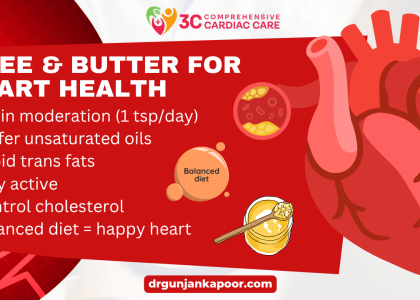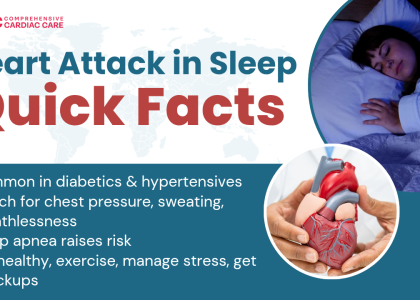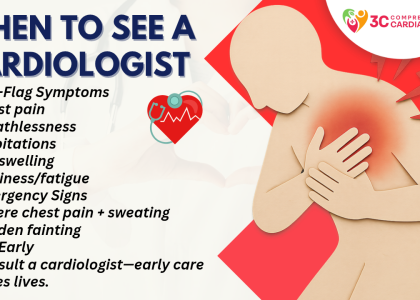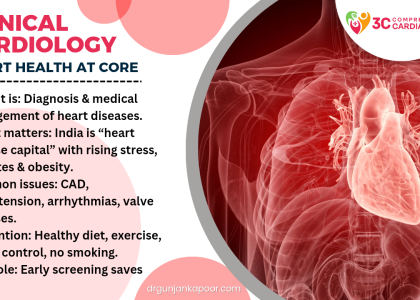❤️ Understanding Heart Failure: Symptoms, Causes, and Treatment Options
Your heart doesn’t stop—but it struggles. Here’s what you need to know.
What Is Heart Failure?
Heart failure doesn’t mean your heart has stopped—it means it can’t pump blood efficiently to meet your body’s needs.
Over time, this leads to fatigue, breathlessness, swelling, and more. It’s a chronic, progressive condition, but with early intervention, many people lead full lives.
Think of it as a tired pump that needs help—not a broken engine.
Types of Heart Failure
There are different types depending on which part of the heart is affected:
Left-sided heart failure:
-
Most common
-
Blood backs up into the lungs
-
Causes shortness of breath
Subtypes:
-
HFrEF (reduced ejection fraction)
-
HFpEF (preserved ejection fraction)
Right-sided heart failure:
-
Blood backs up into the abdomen, legs, and feet
-
Often caused by left-sided failure
Congestive heart failure (CHF):
-
A general term that includes fluid buildup in lungs and other tissues
❗ Common Symptoms to Watch For
✅ The earlier you notice symptoms, the better your chances of managing them.
-
Shortness of breath (even at rest or while lying down)
-
Swelling in ankles, feet, legs
-
Fatigue and weakness
-
Rapid or irregular heartbeat
-
Persistent cough or wheezing
-
️ Loss of appetite or nausea
-
Confusion or memory issues (due to reduced oxygen to brain)
-
⚖️ Sudden weight gain from fluid buildup
What Causes Heart Failure?
Heart failure often results from other heart conditions that damage or overwork the heart.
Key Causes:
-
Coronary artery disease (CAD)
-
High blood pressure (hypertension)
-
Heart attack (myocardial infarction)
-
Cardiomyopathy (weakened heart muscle)
-
Heart valve problems
-
Arrhythmias (irregular heartbeats)
-
Diabetes
-
Alcohol/drug abuse
-
Congenital heart defects
Diagnosis: How Is Heart Failure Detected?
To confirm heart failure, your doctor may perform:
-
Chest X-ray
-
Blood tests (BNP levels)
-
Echocardiogram (to see heart pumping)
-
ECG (Electrocardiogram)
-
MRI or CT scan
-
♂️ Stress tests
-
Cardiac catheterization if needed
Treatment Options: Managing Heart Failure
While there’s no cure, many treatments improve quality of life and longevity.
1. Medications:
-
ACE inhibitors/ARBs
-
Beta-blockers
-
Diuretics (reduce fluid buildup)
-
Aldosterone antagonists
-
SGLT2 inhibitors (recent breakthrough)
-
Digitalis (digoxin)
2. Lifestyle Changes:
-
Low-sodium diet
-
Exercise (as advised)
-
Weight monitoring
-
Quitting smoking and alcohol
-
Managing stress
3. ⚡ Devices & Surgery:
-
Implantable Cardioverter Defibrillator (ICD)
-
Cardiac Resynchronization Therapy (CRT)
-
Pacemakers
-
Heart valve surgery
-
Left Ventricular Assist Device (LVAD)
-
Heart transplant (in advanced cases)
Living With Heart Failure
❤️ It’s a lifelong condition—but it’s manageable.
Daily Self-Monitoring:
-
Check weight
-
Track symptoms
-
Take medications on time
-
Report any swelling, breathing issues, or sudden weight changes
Mental health support and cardiac rehab programs are vital for long-term well-being.
Final Thought
Heart failure is not the end—it’s a wake-up call. With the right mix of medical treatment, lifestyle changes, and regular monitoring, many people live well for decades. Early diagnosis and proactive care make all the difference.
⚕️ Don’t wait. Get checked. Listen to your heart—literally.









